After escaping the brush fire, we headed into the town of Buldibuyo, hoping the rumors were true that the major landslide (which had closed the only road south for the last 6 months) had finally been cleared. Well, we certainly timed that well. We pulled into Buldibuyo as they were having the Grand Re-Opening of the road! This means we did NOT have to backtrack 22 hours of slow mountain driving. Woohoo!
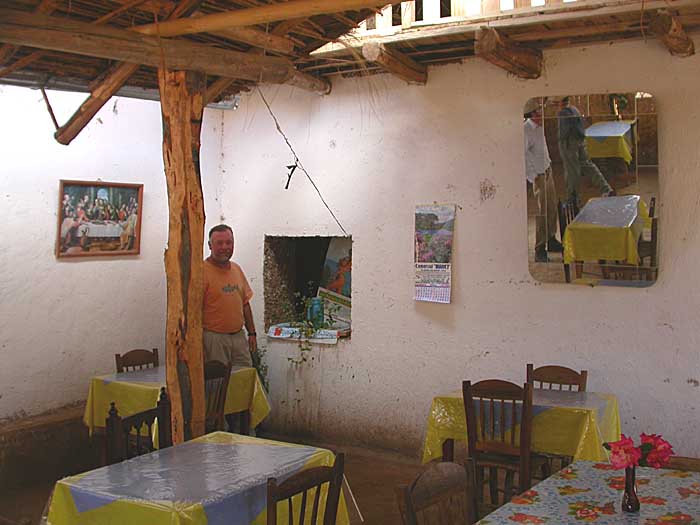 |
Lunch in Buldibuyo.
It was interesting that most restaurants in small towns had wall decorations consisting of various pictures of the Last Supper, The Virgin Mary, scenes of Peru, and bikini-clad or topless women on calendars and beverage posters! |
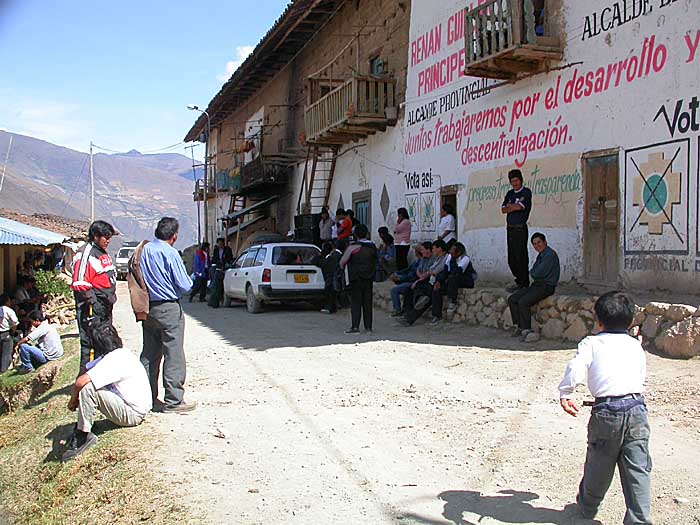 |
The Grand Re-opening Ceremony of the completion of the re-building of the road. Ironically, the road was blocked by the ceremony, so we had to wait about a half-hour before we could continue . . . |
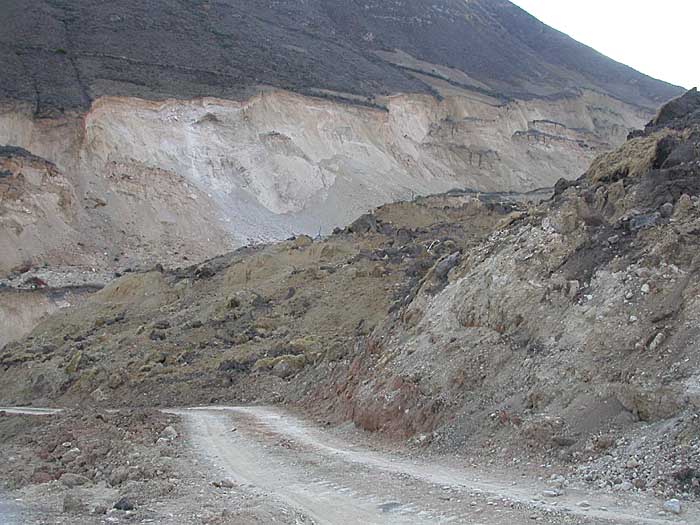 |
We were told the landslide was 3 km long. It was very impressive, although it was difficult to capture its scope in pictures. |
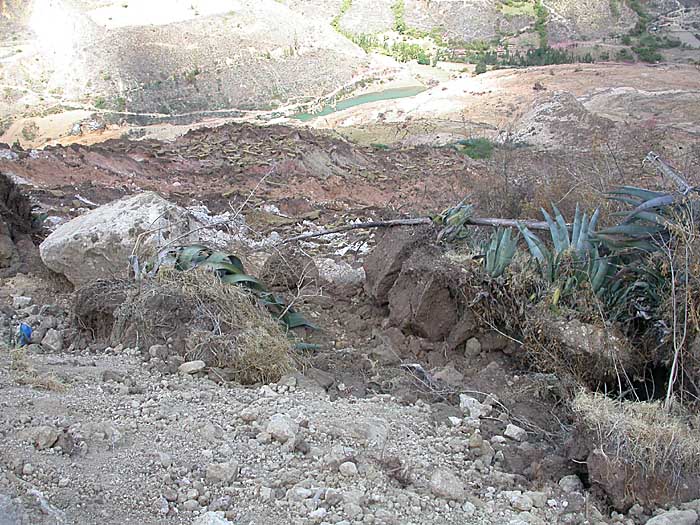 |
Note the big chunks of Earth tossed around. Also note the river was hundreds of feet below. We had our fingers crossed that the new road was stable! |
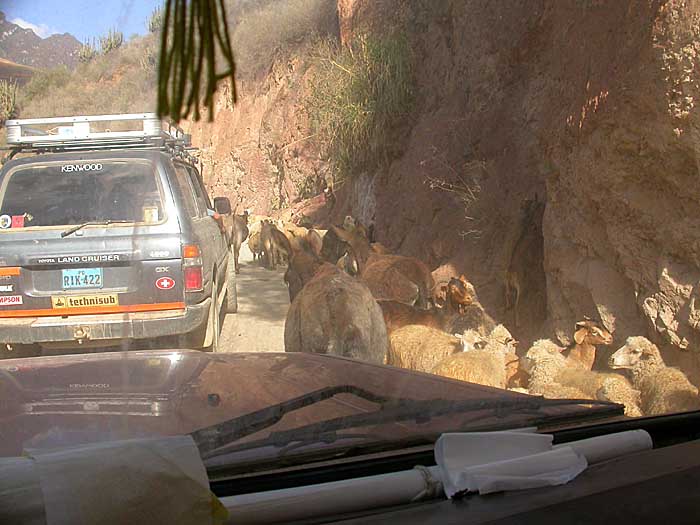 |
Well, we made it through the landslide. Here's our next road obstacle. |
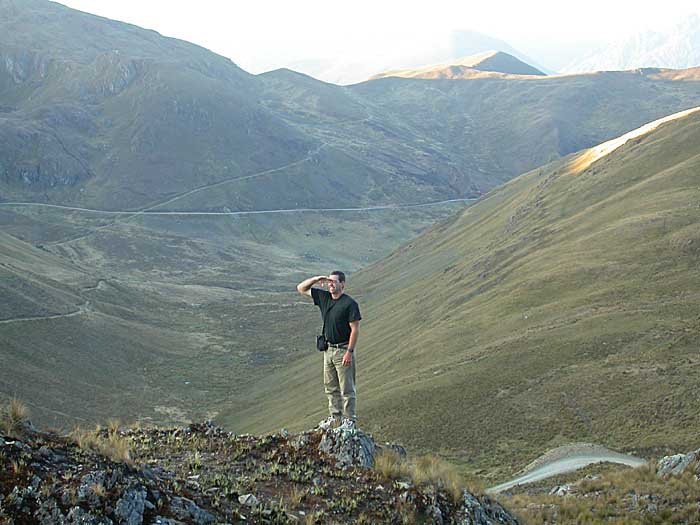 |
Hey Derb, I'm on the top of the world. Where did you go? |
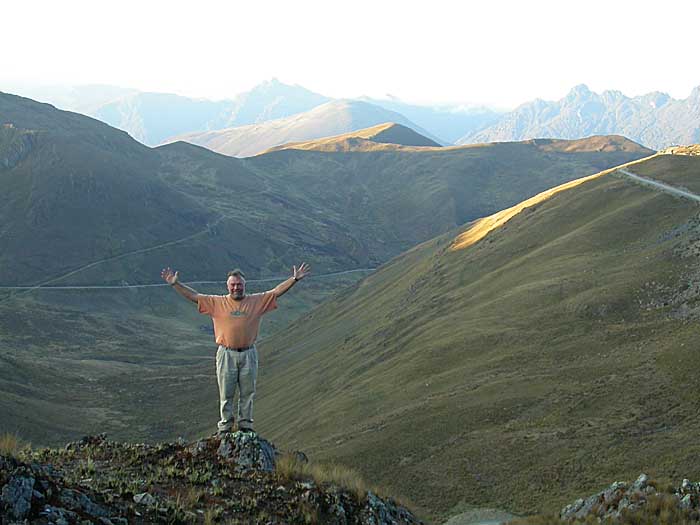 |
"Here I am! There's room for both Michigan AND Carolina up here . . ." |
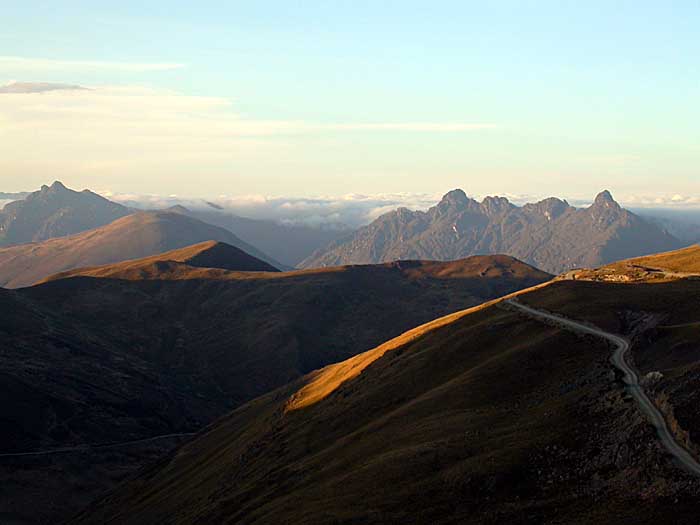 |
Mountain vista along the road to Huancaspata |
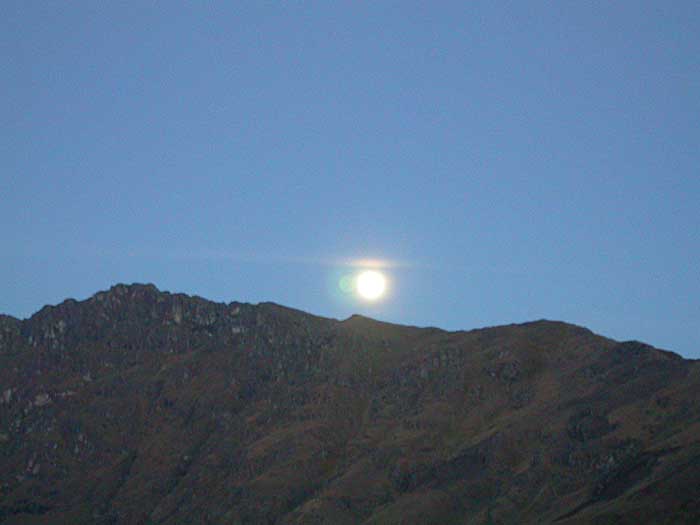 |
Moonrise over the mountains along the road to Huancaspata. |
We spent the night in Huancaspata, a remote mountain village that rolled up the sidewalks at night, unlike most other villages we stayed in. We later found out that there had been some bandito (Sendero Luminoso?) activity in that area, hence the tightness of the town at night!
We then headed down the valley through some impressive canyons and through the town of Sihuas, where we easily saw lots of the very endemic Yellow-faced Parrotlet. Then we went on to Caraz and finally to Yungay.
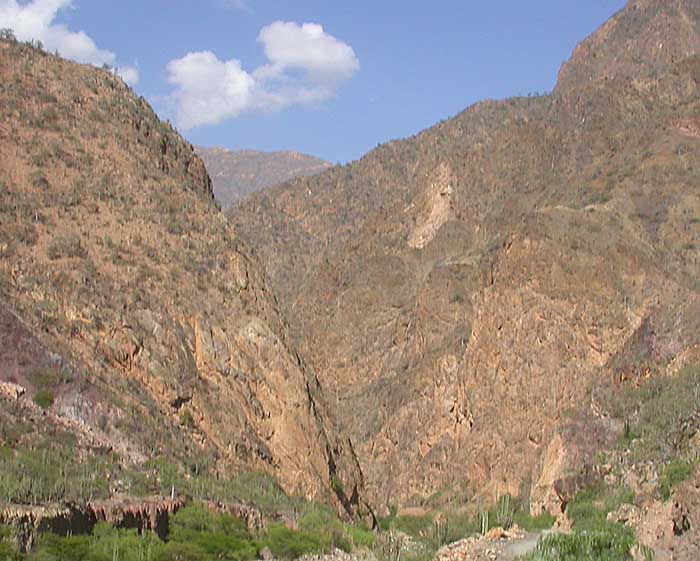 |
|
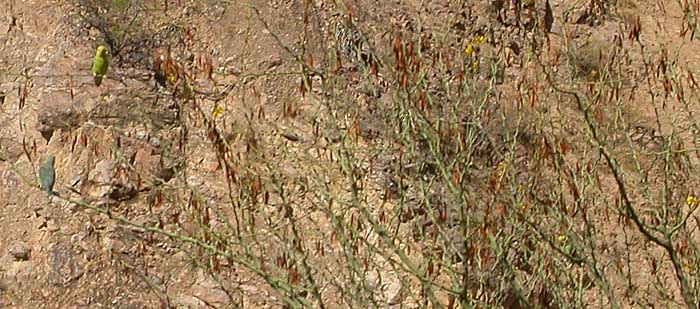 |
Yellow-faced Parrotlets in the tree. |
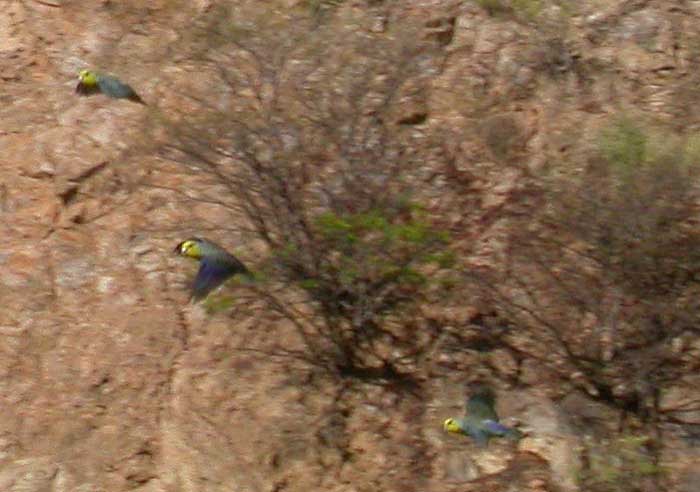 |
Yellow-faced Parrotlets in flight |
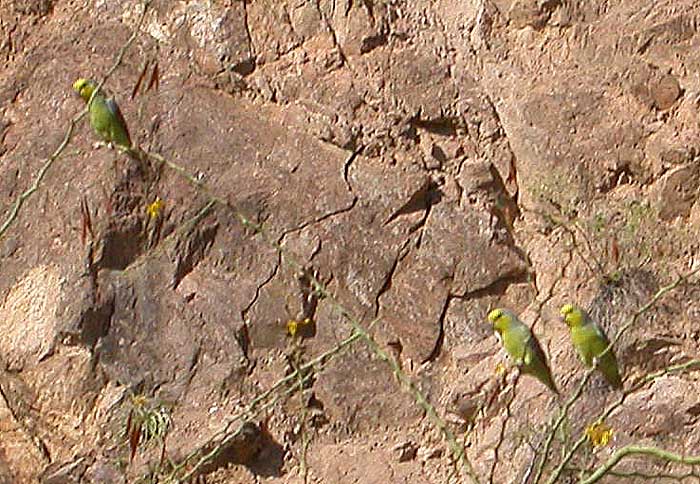 |
Nice of them to perch closer! |
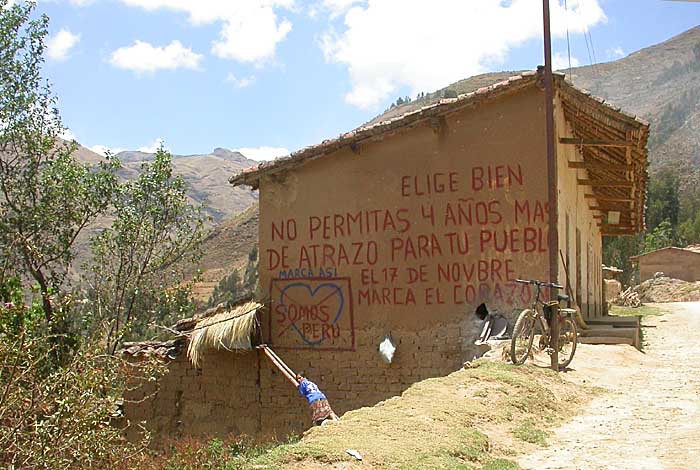 |
Many of the private houses in Peru are painted to show support for the homeowners' political party.
In Peru, there are many different political parties, each with their own symbol (e.g. a wheelbarrow, a shovel, a star, a heart, various numbers, etc.) , and the symbol is depicted with an "X" through it, indicating the way to vote! |
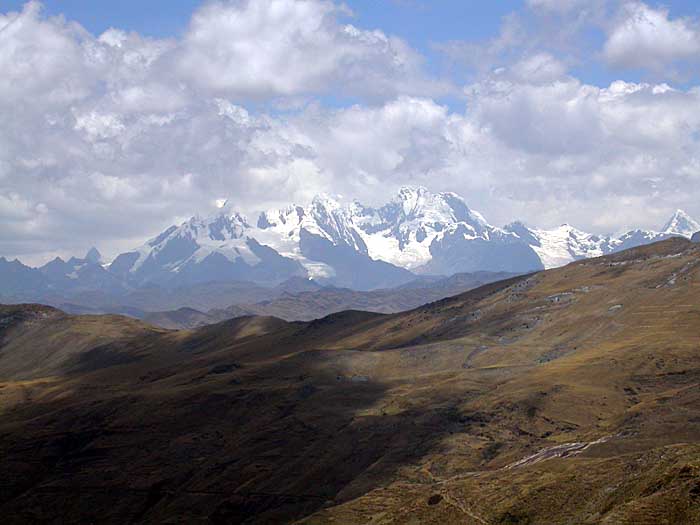 |
The Cordillera Blanca is a range of glacier-capped mountains, many over 20,000 feet, in the Western Andes. |
 |
Here's how I spent many an hour in Peru! |
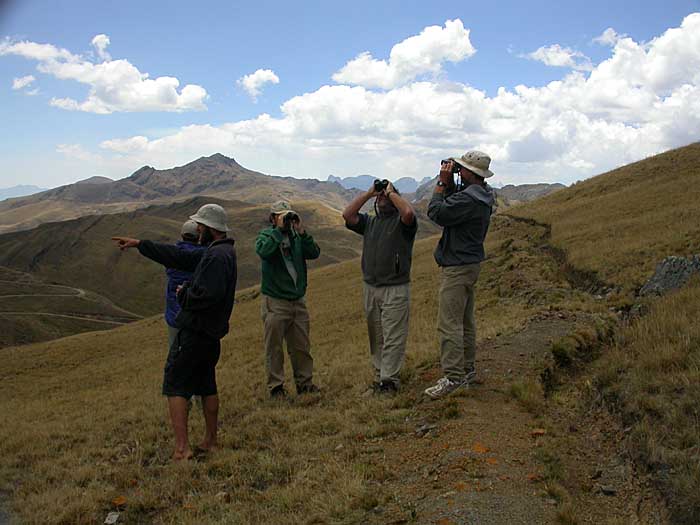 |
At the top of a 4000m high pass on the road to Sihuas, David tried to point out a bird. I think the altitude was causing troubles, however . . . |
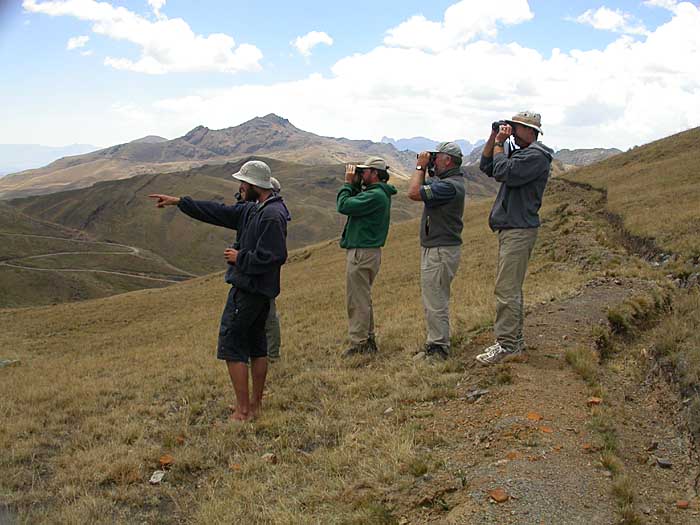 |
Oh, you mean it's over there! |
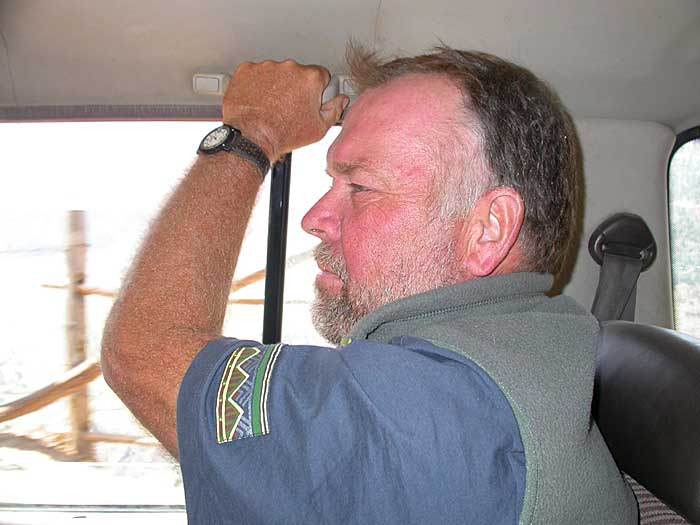 |
Derb's assumes the standard position in the vehicle. |
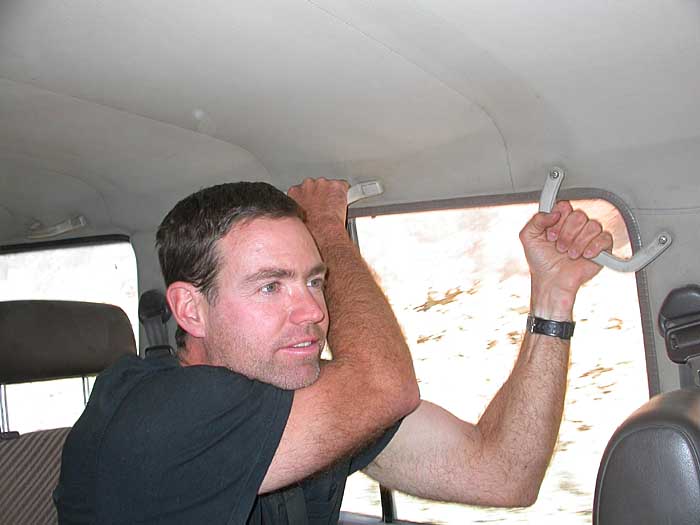 |
Jeff assumes the standard position in the vehicle. |
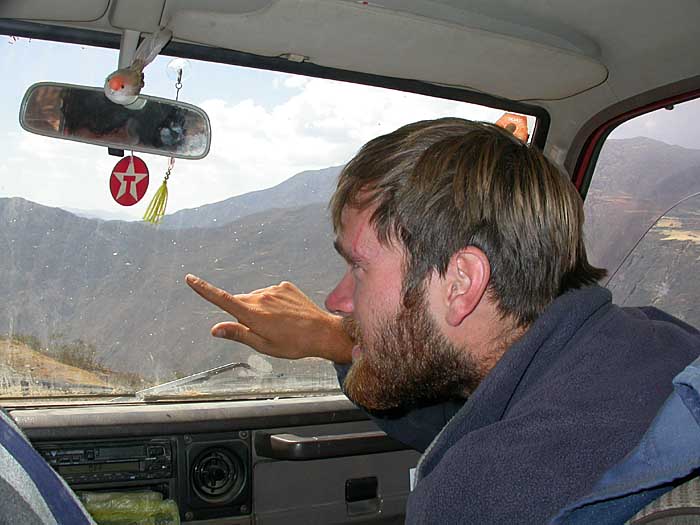 |
David assumes the standard position in the vehicle. |
 |
Juan assumes the standard position in the vehicle. |
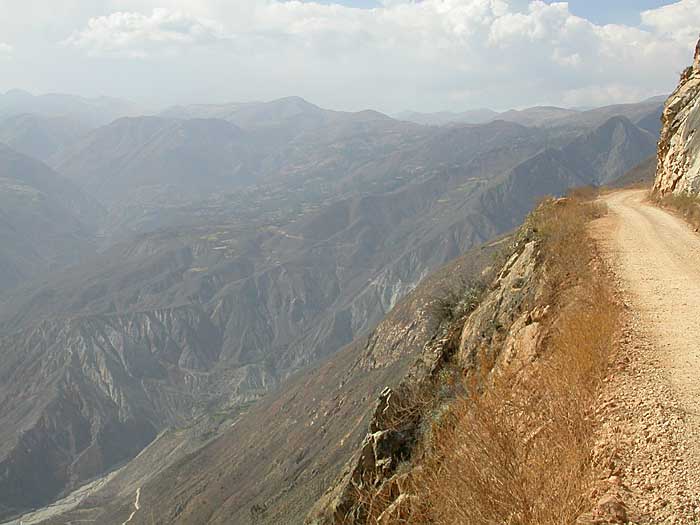 |
The road between Sihuas and Caraz was quite the interesting mountain road -- we're glad the drivers were not sleepy! |
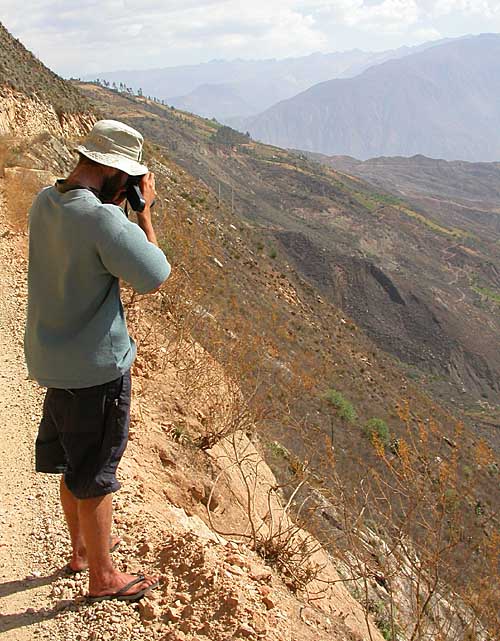 |
David searches for Inca-Finches downslope along the roadside between Sihuas and Caraz. It's not a good idea to mis-judge your footing here. |
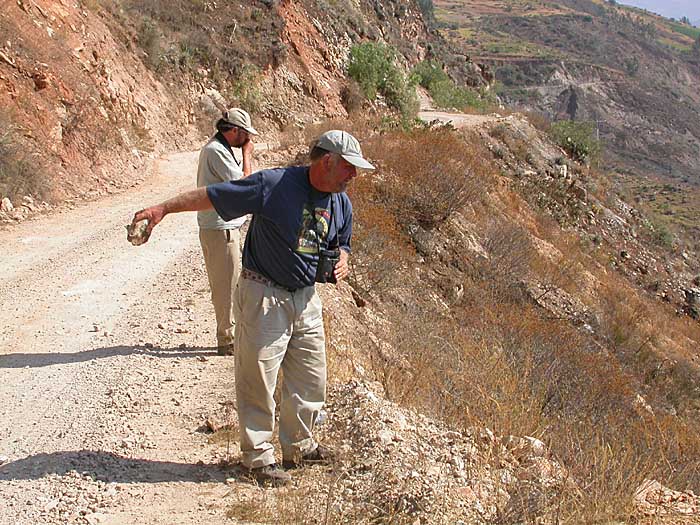 |
Derb realizes the best way to see an Inca-Finch is to go "bowling for Inca-Finches"!
First select the appropriate rock . . . |
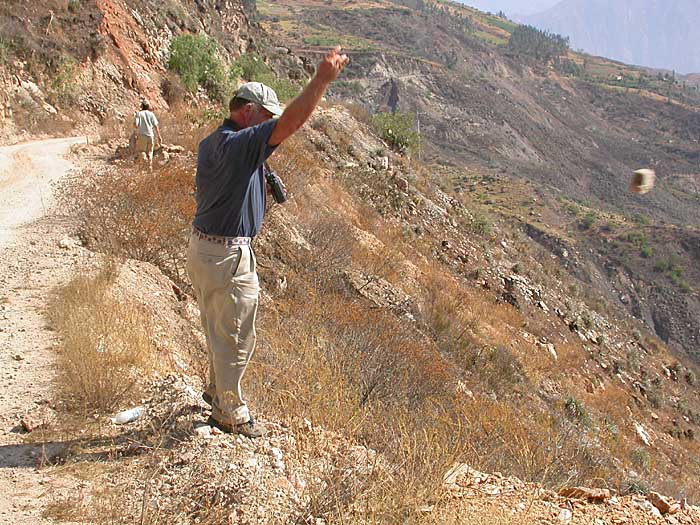 |
And then let 'er rip downhill! It'll stop several hundred yards later, hopefully after an Inca-Finch pops up to the top of a shrub to investigate! (Believe it or not, it worked!) |
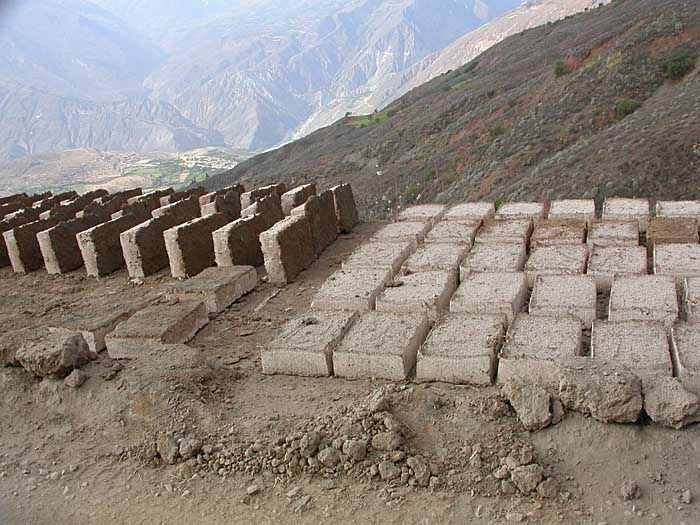 |
In much of the Andes, houses and other buildings are constructed from adobe, a mud/sand/straw/water mixture. Blocks of adobe are cut and sun-dried. |
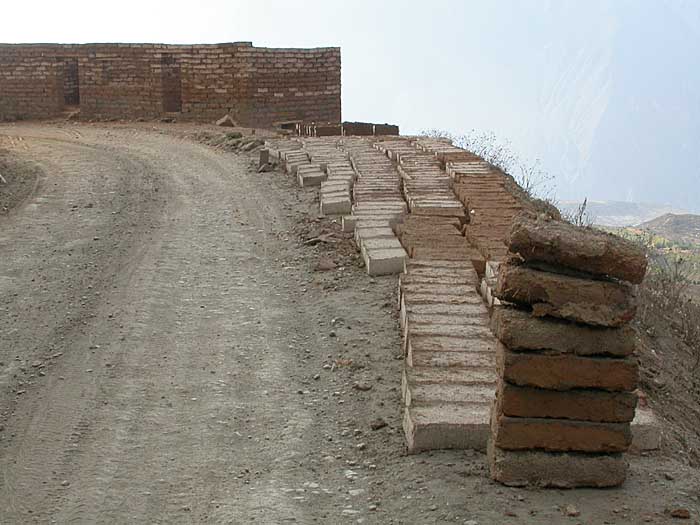 |
The adobe is then stacked like bricks with a mud-mortar to make a building. |
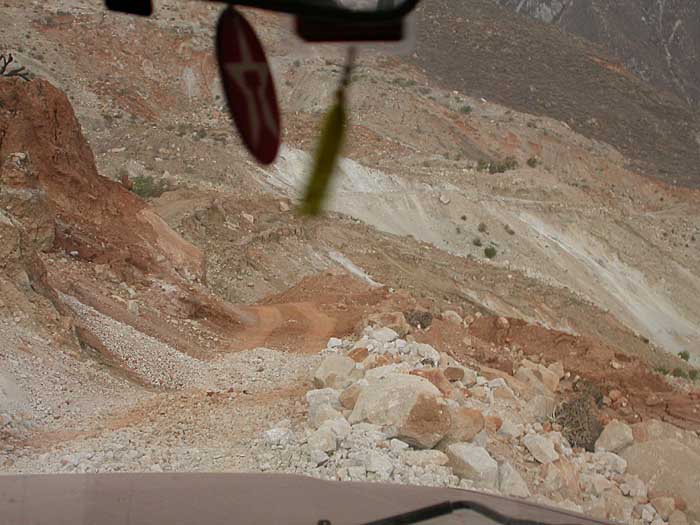 |
Yet another new road over a fresh landslide to traverse . . . |
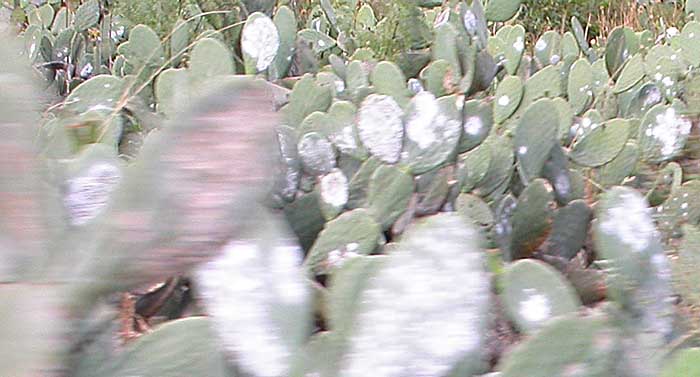 |
In the town of Caraz, a major business is raising larvae in Opuntia (Prickly-Pear Cacti) that are used for making dyes. The larvae cause the white blemish on the cactus leaves, seen here. |
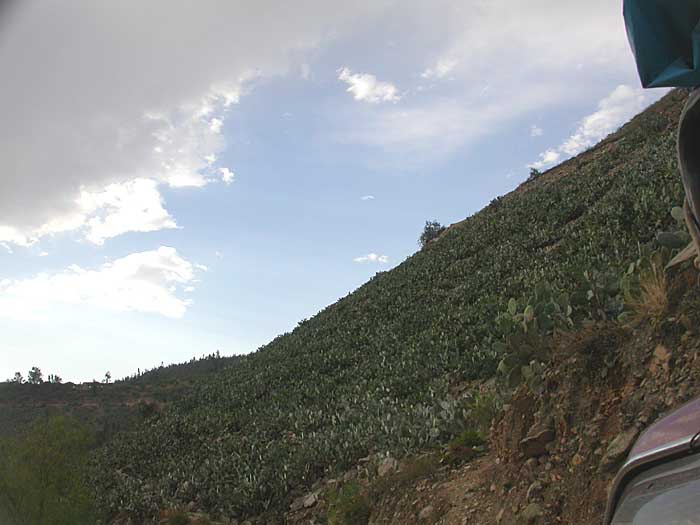 |
The Opuntia fields were vast! |
|
|
|
|
|
|
We traveled through Caraz and on to the town of Yungay for the night. The next morning we drove from Yungay up to Huascaran National Park, an incredible place with some incredible scenery and great birds!






























